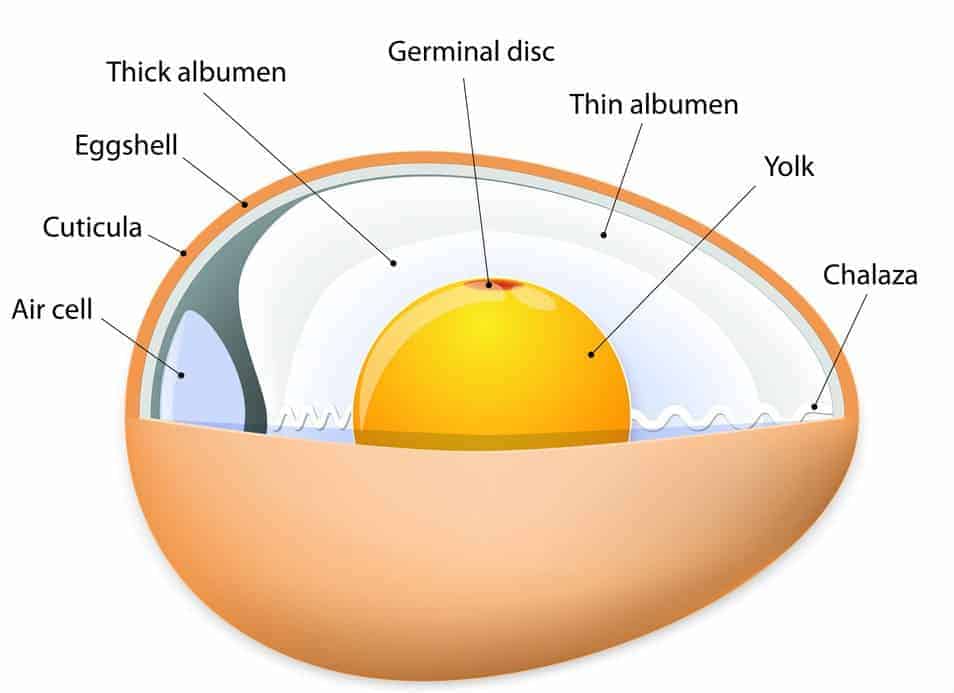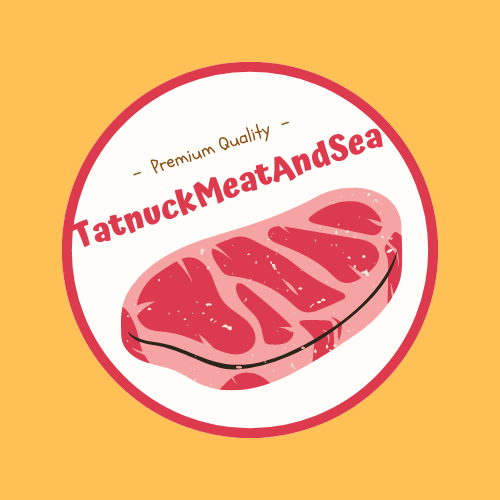Have you ever cracked open an egg and wondered, “Am I eating a chicken?” Or maybe you’ve heard someone claim that the yellow yolk is actually a baby chick. As someone who’s raised backyard chickens for years, I’ve heard all sorts of misconceptions about eggs and what parts might become a chicken. Today, I’m going to clear up the confusion once and for all.
The Quick Answer
Let me start with the direct answer the germinal disc (also called the blastodisc) is the part of an egg that would develop into a chicken – but only if the egg is fertilized and properly incubated. This small whitish spot on the surface of the yolk contains all the genetic material needed to develop into a chick.
The yolk is not the chicken embryo as many people believe – it’s actually the food source for the developing embryo, The white part (albumen) provides protection and additional nutrients
Understanding Egg Anatomy
Let’s break down the parts of an egg to better understand what’s what:
1. The Outer Layers
- Cuticle (Bloom): A thin protective coating that seals the pores of the eggshell. This is why fresh eggs from backyard chickens don’t need refrigeration if left unwashed.
- Shell: Made of calcium carbonate with thousands of tiny pores that allow gas exchange.
- Outer and Inner Membranes: Two layers that help protect against bacteria and maintain moisture levels.
2. The Internal Support System
- Air Cell: Forms between the two membranes at the larger end of the egg after laying as the egg cools and contracts.
- Albumen (Egg White): Contains protein and water, serving as both protection and nourishment for potential embryo development.
- Chalazae: Those rope-like white strands that appear to hold the yolk in place. They’re not sperm or embryos – just protein structures that anchor the yolk.
3. The Nutrient Center
- Yolk: The yellow center that contains fats, proteins, vitamins, and minerals – basically the food supply for any developing embryo.
- Vitelline Membrane: The clear casing surrounding the yolk that maintains its shape.
4. The Potential Chicken
- Germinal Disc/Blastodisc: This small white spot on the yolk surface is the only part that can develop into a chick. In unfertilized eggs (most grocery store eggs), it remains just a disc of cells. In fertilized eggs, it becomes a blastoderm when fertilized by rooster sperm.
The Big Misconception
Many folks think the yolk is the embryo or that the white stringy bits (chalazae) are somehow related to sperm or embryo development. This isn’t true at all!
The yolk is just food for the potential embryo, and the chalazae are simply protein structures that keep the yolk centered. Neither would become a chicken under any circumstances.
From Blastoderm to Chick: The Amazing Journey
When an egg is fertilized, the germinal disc becomes a blastoderm, which is the true beginning of a chick. Here’s what happens after fertilization if the egg is properly incubated:
- The blastoderm cells begin dividing rapidly
- They form three primary germ layers:
- Ectoderm: Develops into skin, feathers, nervous system
- Mesoderm: Forms muscles, bones, blood vessels
- Endoderm: Creates digestive and respiratory systems
The blastoderm is essentially both the “recipe” and “starter kit” for building a chicken. The rest of the egg just provides raw materials and the right environment.
Fertilized vs. Unfertilized Eggs
I often get asked by folks new to backyard chickens: “Is there a difference between fertilized and unfertilized eggs?”
The answer is mostly no – at least not from a culinary standpoint. Both types look almost identical and taste exactly the same. The only difference is that fertilized eggs have the potential to develop into chicks if incubated properly.
In an unfertilized egg, the germinal disc remains just that – a disc. In fertilized eggs, the disc has been activated by rooster sperm and becomes a blastoderm with the potential for life.
Can You Tell If An Egg Is Fertilized?
With a careful eye, you might notice that:
- In unfertilized eggs, the germinal disc appears as a solid white dot
- In fertilized eggs, the center of the dot may appear slightly yellow (now a blastoderm)
But honestly, it’s hard to tell just by looking at the egg. Most people can’t spot the difference unless they’re specifically trained to do so.
Common Questions About Eggs and Chickens
Is there sperm in the eggs we eat?
Absolutely not! The ‘white stuff’ that hangs off the yolk (chalazae) is often mistaken for sperm, but it’s simply protein structures that anchor the yolk. There is no sperm in eggs, fertilized or unfertilized.
Is an egg a dead chicken?
No way! An egg is not a dead chicken in any form. Unfertilized eggs (what you typically buy in stores) never had the potential to become chickens. Even fertilized eggs are just the starting materials for a potential chicken – not a chicken itself.
Can I eat fertilized eggs?
Yes, totally safe! Unless the egg has been incubated for several days, a fertilized egg is perfectly fine to eat. The development process doesn’t begin without the proper temperature and humidity conditions maintained over time.
How long does it take for a chick to develop?
The full incubation period for chicken eggs is typically 21 days. During this time, the egg needs consistent temperature (around 100-102°F) and humidity (50-65%), plus regular turning.
The Egg Production Cycle
One thing that fascinates me about chickens is how they produce eggs. Hens are “programmed” to lay about 10-12 eggs before they would naturally sit on them (go broody). In modern poultry keeping, we remove eggs daily, so the hen never reaches her clutch size and continues laying.
A chicken takes about 24-26 hours to form an egg inside her body. That’s why most hens lay eggs on a somewhat offset schedule – often laying a bit later each day until they may skip a day.
Storing Fresh Eggs
Since we’re on the topic of eggs, here’s a quick tip about storage: Fresh eggs from backyard chickens can be stored at room temperature for 3-4 weeks without refrigeration! This is thanks to the protective bloom coating.
However, if you wash your eggs with water, you’ll remove this natural protection, and they should then be refrigerated. This is why store-bought eggs (which are washed during processing) must be kept cold.
How to Check if Eggs Are Still Good
A simple test: place the egg in a bowl of water.
- If it sinks and lays flat: very fresh
- If it sinks but stands upright: still good but older
- If it floats: it’s gone bad and should be discarded
Wrapping Up
So there you have it! The germinal disc/blastodisc is the only part of an egg that could potentially become a chicken – and only under very specific conditions. The yolk, white, and all other parts are just support systems.
Next time someone tells you that the yolk is a chicken embryo, you can confidently set them straight. And remember, whether you’re buying eggs from the store or collecting them from your backyard flock, they’re a nutritional powerhouse because they were designed by nature to support new life.

The Crop: Your Chicken’s Storage Bag
The crop is a muscular bag at the bottom of the chicken’s neck that stores anything chickens put in their mouth. Food, treats, bugs and grass are regular visitors in a chicken’s crop. A chicken’s crop should be empty and flat in the mornings. Throughout the day as they eat and graze, their crop will fill up and be in the shape of a small ball. It will pass into the gizzard overnight and empty out. If the crop gets impacted, your chicken needs extra attention.
Occasionally, a chicken’s crop can get impacted. If this happens, separate the affected bird and remove the food source from her. Give her water and a little bit of olive oil to loosen things up. Gently massage the crop and allow her plenty of rest and water. It should pass. If it doesn’t pass, you will need to give her more attention. If you don’t it can become a problem like sour crop!
The Oviduct: Egg-Making Factory
The oviduct is an organ that looks like a tube along the backbone between the ovary and the tail. The egg yolk is developed in the ovary. According to Poultry Extension, “When ovulation occurs, the ovum (yolk) enters the oviduct. The oviduct is a twisted tube that is 25 to 27 inches long when fully developed and is divided into five major sections. These sections are the infundibulum, magnum, isthmus, shell gland and vagina. The oviduct makes up the entire system of making an egg outside of the ovary where the yolk is formed. How intricate!
